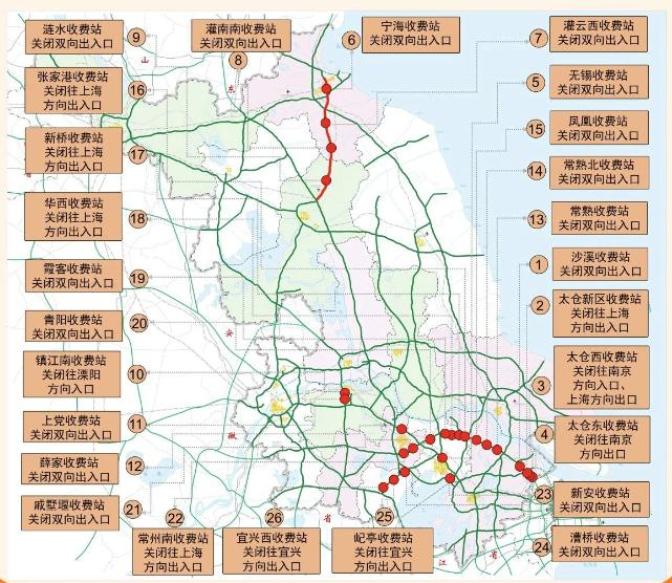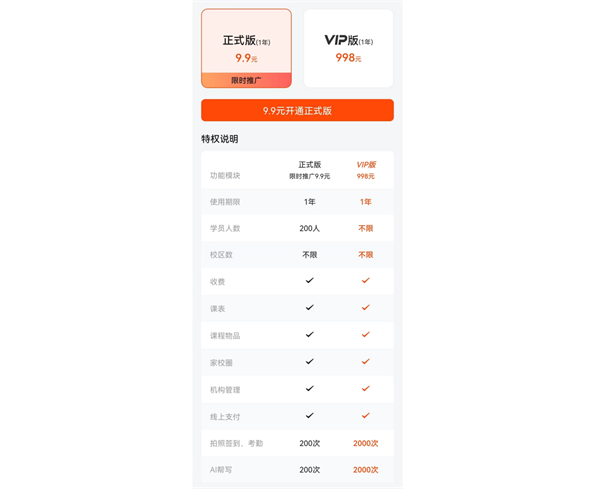Data Governance ④ The anonymity of personal information needs to establish and improve the risk assessment mechanism to promote the compliance and circulation of data.
(Source: The Paper)
As an important part of balancing the value of data and the rights and interests of subjects, anonymity of personal information can effectively weaken and remove the relevance between information and specific subjects through technical measures. On the one hand, it can help to give full play to the effectiveness of information and maximize the efficiency of data utilization in the form of non-personal information, which plays an important role in big data and technological innovation; On the other hand, it can properly control information risks and play a unique role and value in the personal information protection system.

The so-called "anonymization", according to the relevant provisions of the Civil Code, the Personal Information Protection Law and the Cyber Security Law of China, is basically defined as "the process that personal information cannot identify a specific natural person after processing and cannot be recovered". According to the current laws and regulations, the information obtained by anonymizing personal information is not personal information. For the circulation and exit of anonymized information, enterprises do not need to undertake additional compliance obligations. For enterprises, this means that when processing and using anonymous information, enterprises no longer need to bear high costs to meet the compliance requirements of personal information protection.
However, China still faces many problems in information anonymity. The purpose of this paper is to analyze the main problems and causes of information anonymization in China, and put forward corresponding countermeasures and suggestions, so as to provide reference for improving the level of data anonymization and promoting the compliant use of data.
First, the main problems of information anonymity in China.
1.The risk of information re-identification is high, and anonymity cannot be fully realized.Anonymization of personal information requires that anonymous personal information should meet the standards of "unrecognizable" and "unrecoverable". However, from a technical point of view, there is no absolutely "unrecoverable" data, and any anonymous data may be "de-anonymized", that is, the subject of personal information may be re-identified. China’s Personal Information Security Code clearly points out that the anonymized data set (or after being aggregated with other data sets) has the risk of re-identifying the subject of personal information. The EU Article 29 Data Protection Working Group also mentioned in the OpinionNo. 05/2014 that "all the existing anonymization technologies cannot completely eliminate the risk of re-identification left by the processed information". With the continuous development of data mining technology, personal information collection behavior is increasing, re-identification attacks will become easier, and data anonymity is facing increasing risks. There have been many cases of anonymous failure in the world. For example, AOL published the three-month search records of 650,000 users and anonymized them to promote the research of search technology. However, The New York Times successfully de-anonymized some data and made public the true identity of one of the users. This privacy leak has aroused widespread concern, and AOL was sued in the Northern California District Court for this incident.
2.The implementation of anonymous standards is vague, and it is difficult for enterprises to comply with it.Because absolute anonymity is technically difficult to achieve, and the boundaries of relative anonymity are not clear, the implementation of anonymous standards at present is subjective and fuzzy, which brings high compliance difficulty to enterprises. Especially in cases involving data leaving the country, enterprises often face complex compliance challenges. In the investigation, we found that when some multinational companies do business in China, the anonymity standard is not clear, which leads to the complicated data exit approval process, which increases the operational difficulty and compliance cost.
Second, the reasons for the problems faced by information anonymization
1.The purpose of anonymity technology itself contains the possibility of re-identification.The technical principle of anonymous processing is to delete, replace or encrypt the direct identifiers and indirect identifiers in personal information. However, the use value of personal information is closely related to its identifiability. If the data is treated too "clean", it will lead to the loss of business utility of enterprise data, and the business purpose of anonymous processing of enterprises cannot be achieved. Therefore, in order to meet the practicability of anonymous information, some identification factors will inevitably be retained in the process of anonymization, so that the possibility of re-identification of anonymization cannot be avoided.
2.The threat of technology development to data de-anonymization is increasing.First of all, modern data mining technology is becoming more and more advanced and efficient, which makes it easier to re-identify anonymous data subjects through various means. Especially, the progress of machine learning algorithm and the improvement of computing power make it possible to process and analyze massive data. At the same time, with the development of Internet and big data, the sources of auxiliary data have increased significantly. The third party can use a variety of public or non-public data sources for cross-analysis, thus improving the success rate of de-anonymization. For example, through social media data, public databases, business data and other channels, the possibility of reconstructing personal identity information is greatly increased. In addition, the methods of de-anonymization attack are increasingly diversified, including statistical methods, pattern recognition, association rule mining and other technical means. These technologies can mine hidden patterns and associations in data, thus re-identifying the subject of personal information in anonymous data.
3.The third party processor’s challenge to the effect of data anonymity.On the one hand, when the third party has a high degree of mastery of technology and database, and the commercial or political motivation to re-identify the data, it is easy to greatly increase the risk of anonymity. Some professional third-party processors often master more advanced data mining technology and can easily complete the re-identification behavior through "human flesh search" or industry investigation. Compared with private processors, which can only rely on the public information of the Internet, government or public welfare organizations, professional third-party processors can also use additional data resources in commercial databases to complete re-identification, which poses a great threat to data anonymity. In addition, identity information mining for political or commercial purposes is also easy to bring great harm. For example, companies may use improperly collected personal data of users to provide data collection, analysis and strategic communication for election candidates. On the other hand, the personal information collected by the information processor is not only used for the enterprise’s own operation, but also may be sold or shared with a third party, or even packaged as a commodity to earn more economic benefits.
4.Regulators lack an understanding of the industry, and the anonymity standard does not conform to the actual situation.At present, the regulatory authorities often lack in-depth understanding of specific industries when formulating anonymous standards, which makes it difficult to meet the actual operational needs. Due to the significant differences in data types and processing methods in various industries, the general anonymization standard often seems too general or unrealistic in practical application. The regulatory authorities failed to fully consider the technical details and operational complexity in different data processing scenarios, which made it difficult for enterprises to effectively comply with these standards in practice.
Third, the corresponding countermeasures to the problem of information anonymity
1.Improve the system construction and control the risk of anonymity. First, it is suggested to establish and improve the risk assessment mechanism.Anonymization mechanism should take into account the protection of personal information security and the promotion of efficient use of data. Absolute anonymity is difficult to achieve, so we should focus on "relative anonymity", that is, the original information is invisible under certain scope and conditions. On this basis,It is suggested that different levels of resources tilt and policy protection should be adopted to distinguish different levels of anonymous information.According to the volume, content sensitivity and importance of anonymous information, and the possibility of being re-disseminated, anonymous analysis is divided into different risk levels, such as high risk, medium risk and low risk. For high-risk anonymous information, it is suggested to take more strict and protective measures, such as strengthening data security management and strengthening supervision and inspection. For low-risk anonymous information, the compliance requirements and management costs can be reduced accordingly to promote the compliant circulation and utilization of data.Second, third-party risk assessment should be further promoted and supporting protective measures should be implemented.In 2021, the Shanghai Municipal Bureau of Market Supervision issued and implemented the Shanghai local standard "Guidelines for Data De-labeling Sharing", which advocated that supporting control and protection measures should be implemented in the process of data sharing through a trusted third-party platform (such as the data trading center) to promote data compliance circulation.
We suggest that all localities promote this local regulation and strengthen the application of third-party risk assessment. In terms of specific measures,firstIt is necessary to establish and improve the registration and certification system of third-party evaluation agencies to ensure the independence, professionalism and impartiality of evaluation agencies.
next, encourage data processors to select qualified third-party assessment agencies to conduct data security risk assessment and compliance audit in the process of data sharing, so as to ensure that personal information security is not infringed and effectively prevent data leakage and abuse risks.
finally, to promote relevant departments and industry organizations to formulate more specific and operational technical standards and implementation guidelines, and to strengthen the supervision of third-party platforms to ensure that they strictly implement security control and protection measures in the process of data sharing and safeguard the legitimate rights and interests of data subjects.
2.Regulators improve their functions.Regulators should improve communication with relevant departments of enterprises, and have a deep understanding of the current development situation of the industry and the compliance challenges it faces. Better understand and evaluate the actual operation of enterprises in data management and privacy protection, so as to formulate more accurate and effective regulatory measures. In addition, regulators should establish more professional technical teams and legal teams to better understand and evaluate the actual operation of enterprises.
3.Enterprises should strengthen internal management and improve the informed consent mechanism. First, strengthen enterprise internal management and safety prevention and control.. At present, China’s "Personal Information Security Code" stipulates the organizational standards for controlling the internal mechanisms of personal information enterprises, such as responsibility, record management, security assessment, personnel training management and security audit. On the basis of the existing system, enterprises should further refine the internal management system according to their own industry conditions to ensure that personal information handled is not disclosed to unverified third parties.The second is to improve informed consent and spread risks.. Enterprises should establish a more clear and effective informed consent mechanism with users. Inform users that information may face the risk of de-anonymization. The behavior of informed consent reflects the subjective expectation of the subject of personal information on the risk of de-anonymization, which is helpful to reduce the difficulty for enterprises to achieve effective anonymization standards.In addition, enterprises should educate users to enhance their understanding and cognition of personal information processing.At the same time, satisfaction surveys are conducted regularly to collect users’ feedback on data processing measures, so as to improve and optimize the implementation of anonymous processing.
(This article is a series of achievements of the project titled "Cross-border Data Flow, Personal Information Protection and Digital Resilience Construction" by the Development Research Institute of Fudan University. Editor-in-chief of the report: Jiang Tianjiao is an associate professor at the Development Research Institute of Fudan University and deputy director of the BRICS Research Center; Yao Xu is a young associate researcher at the Development Research Institute of Fudan University and a special researcher at the Shanghai Data Research Institute; the report industry tutor is Chen Wenhao, the data compliance business partner and the head of the compliance department of Zhide Law Firm; and the members of the report team are Jin Jinhua, Wu Zhiyuan, Xing Jiayao, Yao Yuan, Ma Yining, Chen Zipei, Lang Jinyi and Zhang Tongyu.
Source: Yao Yuan



![[2022 Punch China] 2022 "Punch the most beautiful landmark in China — — Hello, Shanxi! " The network international communication activity was officially launched in Yuncheng _ _fororder_dddd10](https://p3.img.cctvpic.com/photoworkspace/contentimg/2022/08/17/2022081716290455633.png)














